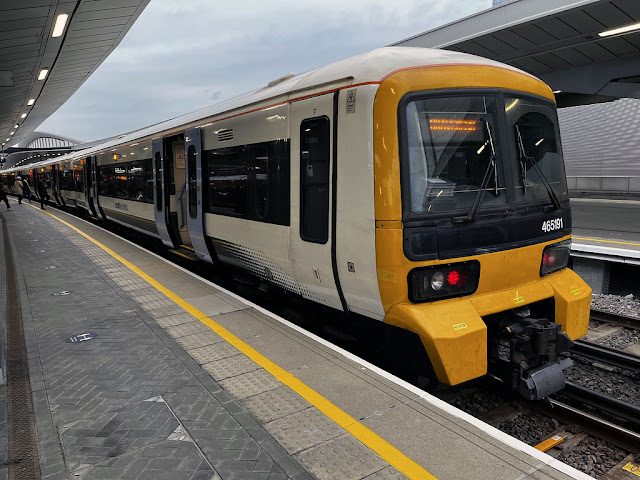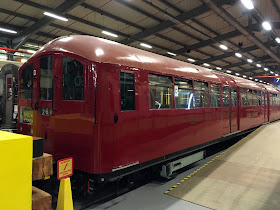 |
| 5606 at Earls Court |
| Information | |
|---|---|
| Number built: | 279 cars (6-car sets) |
| Built: | 1969-71, 1977-78 |
| Builder: | Metro-Cammell |
| Engine: | 4 Brush LT117 traction motors per motor car (630v DC fourth rail) |
| Formation: | Driving Motor (DM)+Trailer(T)+DM+T+T+DM |
In the late 1970s a second batch of sixty seven cars was built to provide eleven more trains for the Edgware Road-Wimbledon branch of the District Line as the C77 Stock (an extra car was built to replace a C69 car destroyed by an IRA bomb). Although there were some technical differences between the C69 and C77s, they could operate together and following refurbishments in the early 1990s there were no longer any visual differences.
The C69 Stock was designed with Automatic Train Operation (ATO) in mind though this was never fitted [3]. They were later converted to One Man Operation (OMO) in the early 1980s and were the first London Underground stock to do so and do away with guards. As built the C Stock had longitudinal and transverse seating, though the later was removed during refurbishment in the early 1990s [4] in common with most other LU stock. Windows were also added to the non-driving ends of cars during refurbishment.
After over forty years service, the C Stock was replaced by S Stock in 2014. Three cars of C77 Stock have survived scrapping including 5721 at the London Transport Museum and the other two are at educational establishments.
 |
| C Stock cab |
 |
| Aboard the preserved C Stock DM |
 |
| Side view of preserved 5721 |
 |
| Another view of 5721 |
 |
| The rear of 5721 showing the added windows (see text above) |
[1] John Glover, London Underground (Ian Allan, 1997) p. 56
[2] John Glover, London Underground Rolling Stock in Colour (Ian Allan, 2009) p. 5
[3] Piers Connor, The London Underground Electric Train (Crowood, 2015) p. 160
[4] John Scott Morgan, London Underground in Colour since 1955 (Ian Allan, 2003) p. 17












































